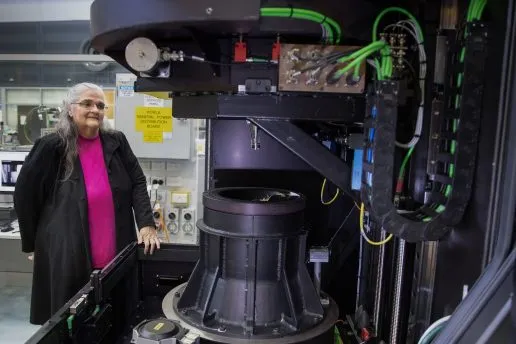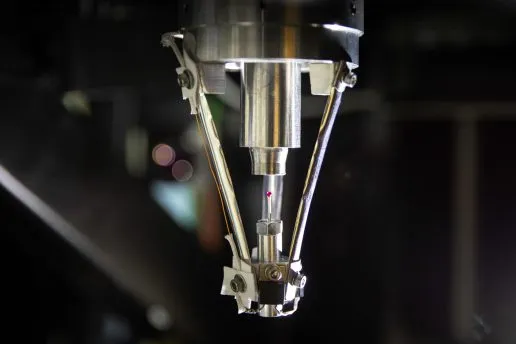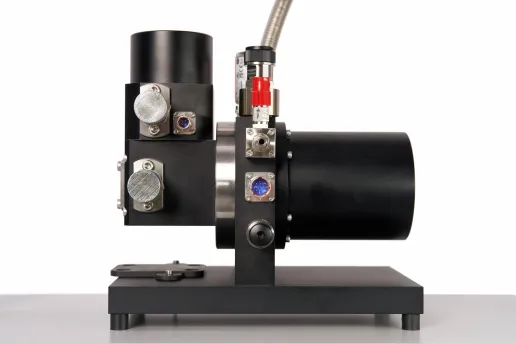Neutron scattering is a powerful technique for investigating the structure and dynamics of materials at the atomic level. By bombarding a sample with neutrons, researchers can study properties like hydrogen atoms, crucial for biological systems, and reveal magnetic structures, enabling the study of magnetic materials and superconductors without electromagnetic interference.
This method faces a significant challenge, however, as the beam flux compared to X-rays is weaker. As a result, it requires larger samples, typically in the range of cubic millimeters. These larger samples are not only challenging to produce but also require precise cryogenic cooling during analysis.

Cryogenic Benefits
As with all diffraction analysis, lowering the temperature of a sample reduces thermal vibrations that can obscure important signals. This enhancement in resolution and sensitivity allows for more precise detection of neutron interactions, facilitating detailed studies of material properties, phase transitions, and exotic states of matter, such as superconductivity and quantum phase transitions.

Cooling Large Samples
A larger sample means a greater volume. This ultimately determines the initial cooling time and impacts the overall thermal gradient across the crystal. Uneven temperature distribution can compromise data quality, particularly when studying temperature-dependent phase transitions. To ensure uniform cooling and prevent the formation of harmful thermal gradients, it is crucial to supply a stream of cryogenic gas with well-defined thermal properties.
Open-Flow Coolers such as our Cryostream and Cobra have Wide Nozzle variants facilitate this, providing a consistent temperature across a much larger volume, ensuring more uniform cooling of the entire crystal.


Argon vs Nitrogen
Nitrogen gas is a widely used and cost-effective cryogen, capable of cooling samples to 80 K, making it suitable for most crystallographic applications. Argon gas, though less common, offers the added advantage of creating an oxygen- and water-free environment, protecting samples from degradation and unwanted reactions.
A prototype Cobra cooler, currently being tested, will operate as a Dual-Flow system like our N-Helix, allowing users to switch between nitrogen and argon.
For more on the latest advancements in cryogenics and its applications in neutron diffraction, subscribe to our newsletter.



